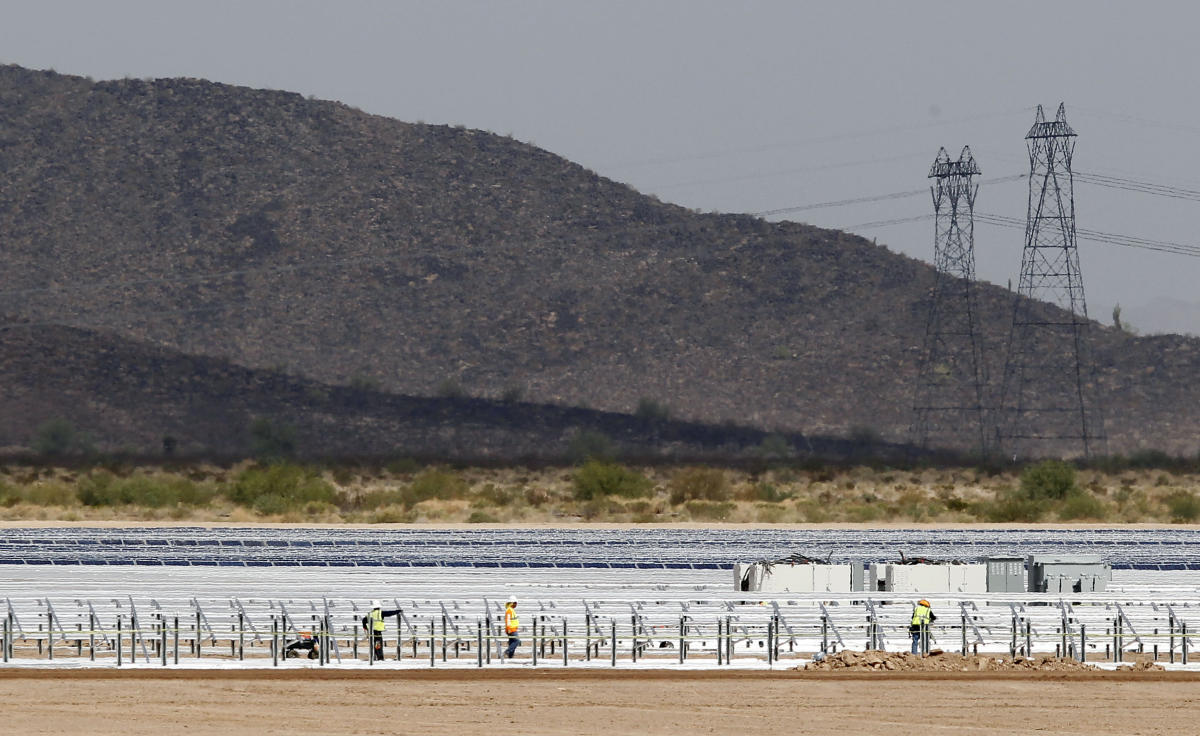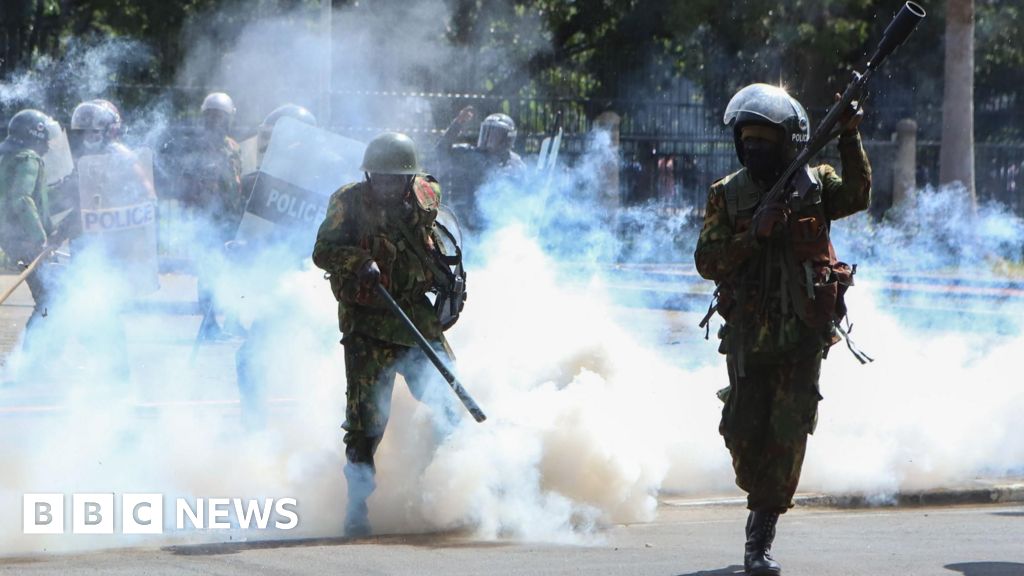The U.S. men’s national team will get its first formidable, official test since the 2022 World Cup at the 2024 Copa América, a stateside soccer extravaganza that begins Thursday and, as U.S. midfielder Tyler Adams said, “feels big.”
“It’s not quite the World Cup,” Adams added earlier this month. “But I think it’s the next best thing.”
It’s a rare opportunity for the USMNT to confront A-list opponents in meaningful matches, and measure progress ahead of the 2026 World Cup (also stateside).
It’s big enough, therefore, for a grand, all-encompassing, World Cup-style preview — 20 questions and answers about the USMNT as it prepares for this pan-American Copa.
In 30 words, what is the story of this USMNT?
Promising players are striding into their primes. Collectively, they’re the most talented USMNT ever. But their lack of a signature win outside their region, CONCACAF, feeds fears that they’re stagnating.
What’s happened since the 2022 World Cup?
Well, a player’s parents borderline blackmailed the coach; the coach’s contract expired amid an investigation; his boss also left U.S. Soccer; the new boss cycled through two interim coaches, then rehired the previous coach, Gregg Berhalter, after a murky, buzzword-heavy search that nobody knows much about.
All the while, the USMNT conquered Mexico and completed a CONCACAF Nations League three-peat. But it stumbled to the third title, losing a second leg to Trinidad and Tobago, then nearly falling to Jamaica in a semifinal. It also flopped in friendlies against Germany and Colombia. Prior to a stabilizing draw with Brazil in its last match before the Copa América, pressure spiked — and Berhalter’s seat began preheating.
So, why is this Copa América so important?
Because the USMNT has outgrown CONCACAF. To leap toward loftier ambitions — namely, a 2026 World Cup quarterfinal or semifinal — it must start toppling superpowers. This Copa América is its one and only chance to do that between 2022 and 2026.
“It’s a chance for us to show, before the World Cup, that we’re a team to be feared,” defender Chris Richards said.
If they can’t, it’ll spark heated, thorny conversations about whether Berhalter should continue as the coach. (More on that below.)
Can the USMNT win the 2024 Copa América?
They could. But they’re a step (or more) below what Berhalter recently called South America’s “Big Four,” and they’d probably have to beat three of the four to emerge with a trophy.
Eighteen months ago, the USMNT looked like a potential third-favorite, behind only Argentina and Brazil — the only other two teams in this 16-nation field that reached the 2022 World Cup knockout rounds.
But its progression has slowed. Colombia and Uruguay, meanwhile, have surged. And the Copa bracket looks extremely unkind. Four of the top five teams are on one side. The U.S. will likely get Colombia or Brazil in the quarters; it would then face one of those two or Uruguay in the semis; and then Argentina in the final.
How is this ‘the most talented USMNT ever’?
In 2019, all but five players on a U.S. A-team came from MLS, which was roughly the 15th or 20th best league in global soccer. That was a nadir for the player pool, but even in the more distant past, at most, around half the roster would come from the so-called Big Five leagues in Europe — and often from clubs laboring mid-table or threatened by relegation.
Now, there are only three MLS players — a third-string goalkeeper and two backup defenders. Of the 26 U.S. players going to this Copa América, 15 spent last season in the Big Five. A 16th, 17th and 18th played in the Champions League. A 19th scored massive goals in the English FA Cup quarterfinals and semis.
Haji Wright, a few days after missing out on USMNT squad, sets up a 97th-min equalizer, scores this 100th-minute winner for Coventry in the FA Cup quarters.
SCENESpic.twitter.com/hYJS0iGmk4
— Henry Bushnell (@HenryBushnell) March 16, 2024
A 20th, fullback Sergiño Dest, also played in the Champions League, but is injured. His replacement speaks to the USMNT’s unprecedented depth: Joe Scally, at 21 years old, has already started 70 games for Borussia Mönchengladbach in the German Bundesliga.
Who is the USMNT’s best player?
Christian Pulisic. At 25, he just finished up his best professional season with 15 goals and 10 assists for AC Milan in Italy. He’s the USMNT’s most dangerous attacker and, more so than ever before, its leader.
“Guys look up to him. Guys look to him for inspiration,” Berhalter said after last week’s 1-1 draw with Brazil, in which Pulisic scored the U.S. goal. “And I think the most important thing about Christian is, guys know, in [big] moments, he’s gonna step up.”
Who’s the USMNT’s most important player?
Gio Reyna. His vision and on-ball creativity are unrivaled. After a few hellish years of injuries, uncertainty, off-field drama and meager playing time, he has established himself as the USMNT’s irreplaceable playmaker-in-chief. If he’s neutralized or absent, the U.S. often lacks final-third precision. When he’s on — in his “flow state,” as he explained to Yahoo Sports recently — he’s a game-changer.
Who else will be in the U.S. starting lineup?
With a few notable exceptions, the 2024 Copa América core is the 2022 World Cup core. The 4-3-3 formation is roughly the same. The probable starting lineup for any consequential game is:
Goalkeeper: Matt Turner
Right back: Joe Scally*
Center back: Chris Richards
Center back: Tim Ream
Left back: Antonee Robinson
Defensive midfield: Tyler Adams**
Central midfield: Weston McKennie
Central midfield: Gio Reyna
Right wing: Tim Weah
Striker: Folarin Balogun***
The asterisks: Are there injuries?
*Scally, nominally, is the replacement for Dest, who tore his ACL this spring. But he doesn’t replicate any of Dest’s on-ball sauce or attacking contributions. He’s a workmanlike and capable 1-v-1 defender, and earned his starting spot with strong performances against Brazil’s Vinicius Junior and Colombia’s Luis Diaz. Against lesser teams, though, when dribbling and distribution become the priority skills, Berhalter could opt for Weah or a surplus midfielder at right back.
**Adams battled injuries throughout the 2023-24 club season. He returned last week for 15 minutes against Brazil, but is still building back toward full fitness. If he’s not fit to start, either Yunus Musah (a 2022 starter) or Johnny Cardoso will step in. (Musah, in some scenarios, also could play alongside Adams, in place of McKennie or Reyna.)
***Josh Sargent has been superb for Norwich City in the English Championship. If healthy, he might have pushed Balogun for a starting spot. But he’s been struggling with what Berhalter called a “nagging foot injury,” and might not be available for the start of the tournament.
Balogun? Does the U.S. finally have a legit striker?
Yep. Striker had been the problem position ever since Jozy Altidore’s decline. Enter Folarin Balogun, a New York-born multinational who, after a recruiting visit in March 2023, chose to represent the U.S. over England and Nigeria. Amid a breakout year at Reims in France, on loan from Arsenal, at age 21, he instantly became the USMNT’s No. 9 of the present and future.
“Balo,” as he’s known, hasn’t yet been lethal in a U.S. shirt. He’s arguably been constrained by Berhalter’s system. He also had a tough first year at Monaco, after a $32-plus million summer transfer. But he’s the most well-rounded and efficient striker that the U.S. has had since (at least) Altidore, and has filled the team’s biggest 2022 hole.
If not striker, what is this USMNT’s biggest weakness?
It’s no longer a single player or position. It’s — well, it seems to be something different every game. In September, possession was stodgy. In October against Germany, without Adams, the midfield got pulled apart. In March against Jamaica, until Reyna arrived, the Americans lacked final-third inventiveness and urgency. Last week against Colombia, when they lost 5-1, they often struggled to get out of their own defensive half.
The most consistent complaint, essentially, is that their possession game is more high-risk than high-reward; that they like to control games by keeping the ball, but don’t do enough with it.
Is that Berhalter’s fault? And is it fixable?
It’s less a fault, more a preference. And yes, it’s absolutely fixable — or changeable.
Berhalter isn’t the positional-play idealogue that many critics think he is. Case in point: 2022. Pre-tournament friendlies against Japan and Saudi Arabia yielded a chorus of criticism and dread, because all these familiar issues arose — just as they did this month against Colombia. But, when games began to count, at the World Cup in Qatar, pragmatism set in, intensity levels spiked, and Berhalter had very specific plans for Iran, England and Wales. The U.S. looked lively and somewhat dynamic — albeit inefficient in the attacking third — until players ran out of gas.
That, in a way, is the blueprint for this Copa América. The standard tactics take a backseat. Opponent-specific game plans — still underpinned by principles, but not overridden — take over.
OK, so who are the USMNT’s group opponents? What’s their Copa América schedule?
The U.S. drew Uruguay, Panama and Bolivia in Group C. Its schedule:
Sunday, June 23 vs. Bolivia in Arlington, Tex. (6 p.m. ET, Fox)
Thursday, June 27 vs. Panama in Atlanta (6 p.m. ET, Fox)
Monday, July 1 vs. Uruguay in Kansas City (9 p.m. ET, FS1)
The top two of four will advance to the quarterfinals.
The U.S. should breeze to the knockout rounds, right?
It should, yes. Panama won’t be a pushover. But the most likely scenario is that the U.S. and Uruguay both cruise to Matchday 3 on six points apiece, with quarterfinal berths clinched. Anything less would be a disappointment.
That Uruguay game is the big one, then, yeah?
Yes and no.
Soccer-wise, it’s a fascinating matchup. On paper, it looks like the USMNT’s first real Copa América litmus test. Uruguay is flying under Marcelo Bielsa, the revered Argentine manager whose dogmatic commitment to pressing makes any match he coaches thrilling.
This match, however, might not matter much if Group C and D are full of chalk.
Would finishing first in the group matter?
Not really, because a giant will likely await in the quarterfinals either way.WORDS
Group C is paired with Group D for the knockout rounds. Winners play runners-up. Quarterfinal winners then meet in the semis. And Group D features … Colombia and Brazil. They’ll surely finish 1-2, in some order. They meet in their final group game, one day after U.S.-Uruguay, likely to determine the order — which hardly matters from a USMNT perspective, because both are menacing.
What are reasonable expectations for the USMNT?
The 50th-percentile result is what it seemingly always is: Advance from the group, lose in the first knockout round.
This, though, is where it’s important to distinguish between ambitions and expectations, which are two very different things.
A quarterfinal loss wouldn’t be satisfactory; it wouldn’t qualify as success. The USMNT’s ambition is, at the very least, to win a knockout match and reach a semifinal. Anything less would feel like a letdown.
Realistically, though, Colombia or Brazil would be favored in that quarterfinal. Losing it wouldn’t equate to failure either.
Is Berhalter coaching for his job?
I essentially asked Berhalter this last week. “I don’t think I’m the right person to answer that question,” he responded.
The best person to answer it is U.S. Soccer sporting director Matt Crocker, but Crocker hardly ever gives interviews. So, we’re left to wonder what’s going through his head.
The popular assumption is that, if the USMNT crashes out of its group, Berhalter would probably get canned. The more intriguing scenario is the 50th-percentile one.
Would a quarterfinal loss get Berhalter fired?
Let’s consider that 50th-percentile scenario. Losing to Colombia or Brazil, of course, would not on its own be a fireable offense. But it would be the latest in a growing line of missed opportunities to prove that the USMNT is making progress.
Progress, in theory, is at the heart of the question that Crocker will ponder later this summer. He’ll presumably step back after Copa América and ask: Is the program trending upward — as the evolution of the player pool suggests it should?
A quarterfinal loss would seem to suggest that the answer is no; that the trajectory is flat; that Year 1 of Berhalter’s second cycle was time wasted.
But “a quarterfinal loss” is overly simplistic.
Results are the currency of 2024 ambition, but not of 2026 forecasting. If they were the only evidence Crocker could consider, his sample size would be prohibitively small. Boiling a predictive decision — “does Berhalter give us the best chance to win in 2026?” — down to a black-and-white binary — “beat Brazil or lose your job” — would be silly.
Crocker’s currency, instead, will be performances. Performances allow him to create a more fluid grading scale. The interpretation of a 4-0 quarterfinal spanking, through a 2026 lens, would be very different than the interpretation of a 2-1 loss in extra time with tons of missed chances.
In the latter scenario, for example, Berhalter could point to the loss, and to the recent 1-1 draw with Brazil, and to the 0-0 draw with England at the World Cup; he could argue that the USMNT is knocking on the proverbial door. He could argue that luck, not his own limitations, is the primary reason he remains without a signature win; and that, come 2026, he will have this team in position to topple superpowers.
So, the answer to the question — “Would a quarterfinal loss get Berhalter fired?” — is probably “it depends.” It depends on the nature of the hypothetical loss, on underlying metrics, and on a more qualitative assessment of progress.
Prediction time: How far will the USMNT go?
To the quarterfinals, and no further.
It’s the boring take, but the accurate take. I think the USMNT will compete in that quarterfinal; I also think they’re much more likely to win it than to crash out in the group. But they don’t have the top-end talent to truly outplay a team like Brazil or Colombia. They’ll need an 80th-percentile performance and some luck to last more than four games.

Daniel Miller is a sports fanatic who lives and breathes athletics. His coverage spans from major league championships to local sports events, delivering up-to-the-minute updates and in-depth analysis for sports enthusiasts.





